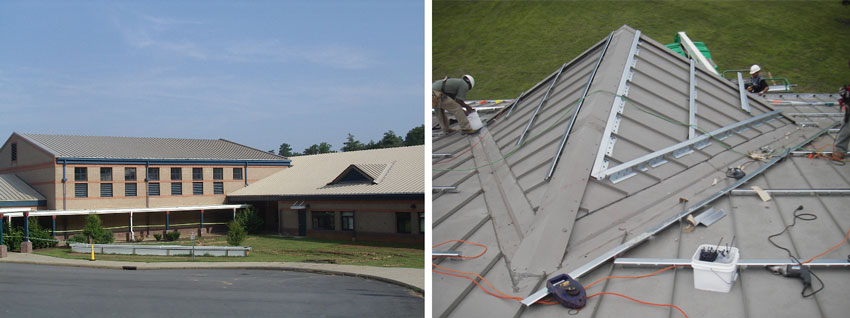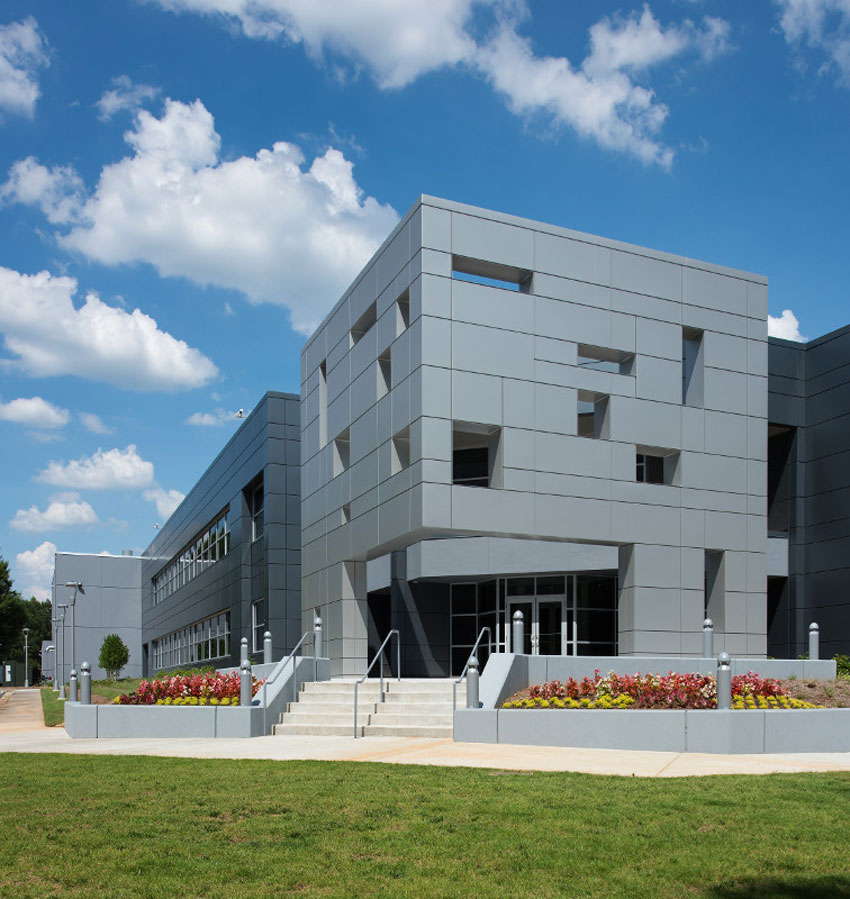The Metal Retrofit Revolution
 1 AIA LU/Elective; 1 IDCEC CEU; 0.1 ICC CEU; 1 IIBEC CEH; 0.1 IACET CEU*; 1 AIBD P-CE; AAA 1 Structured Learning Hour; This course can be self-reported to the AANB, as per their CE Guidelines; AAPEI 1 Structured Learning Hour; This course can be self-reported to the AIBC, as per their CE Guidelines.; MAA 1 Structured Learning Hour; This course can be self-reported to the NLAA.; This course can be self-reported to the NSAA; NWTAA 1 Structured Learning Hour; OAA 1 Learning Hour; SAA 1 Hour of Core Learning
1 AIA LU/Elective; 1 IDCEC CEU; 0.1 ICC CEU; 1 IIBEC CEH; 0.1 IACET CEU*; 1 AIBD P-CE; AAA 1 Structured Learning Hour; This course can be self-reported to the AANB, as per their CE Guidelines; AAPEI 1 Structured Learning Hour; This course can be self-reported to the AIBC, as per their CE Guidelines.; MAA 1 Structured Learning Hour; This course can be self-reported to the NLAA.; This course can be self-reported to the NSAA; NWTAA 1 Structured Learning Hour; OAA 1 Learning Hour; SAA 1 Hour of Core Learning
Learning Objectives:
- Discuss the details of the retrofit and reroofing market, its size, and the different roofing types.
- Differentiate between the advantages and risks of retrofit and reroofing, and pinpoint key design considerations for these projects.
- Identify the energy-generating and saving options available with metal roofing projects.
- Describe best-practice insights for metal wall retrofits.
- Review helpful metal roofing and cladding renovations.
This course is part of the Metal Architecture Academy
Commercial and Industrial Reroofing and Retrofit Design Considerations
When embarking upon a reroofing or retrofit project, there are numerous aspects that must be carefully evaluated, but Gardiner characterizes the most important as those associated with life safety. “The existing structure and roofing requires evaluation for live, dead, and drag loads to determine if retrofit solution will meet local building codes.”
For example, consider a retrofit using a single-ply membrane roof over an existing metal roof. Not only is the load path and metal substrate’s strength/stiffness different from original design, but the latest codes may also require higher load path values, explains Gardiner in a recent white paper, “Comparison of Retrofit Systems Over Existing Metal Roofs,” for MBMA. “Existing secondary structural members may require reinforcement at purlin laps and other structural modifications,” he writes.
Additionally, the deflection criteria used for a metal building is less than that for conventionally roofed structures due to the weight of the materials used. This can create water flow issues when single-ply roofing is installed over existing metal panels. Water sheet flows across single-ply roofs, unlike metal panels where the ribs channel the water to the eave. Structural failures have resulted when water was allowed to pond on TPO covered metal roofing.
Fire ratings may also be affected as metal panels are considered noncombustible, unlike single-ply roofing materials. It’s important to confirm that the building’s fire rating will not be adversely affected by use of singly-ply system.
Gardiner also recommends performing a design review of the retrofit roof field, perimeter, and corner zones to both ensure the code compliance of the new roof system for both wind and snow loadings and to ensure that the existing structure is suitable to withstand the new higher loads.
Confirming these comments, Getelman lists the main existing design aspects that must be considered prior to a retrofit as the underlayment, flashing details, and cost of the different roofs along with their respective longevity, durability, maintenance, and sustainability factors.
When recovering an existing metal roof system, it is important to consider the age and type of structure being re-covered, according to Sagan.
For example, an existing metal building with cold-formed steel secondary structural members and a 24-gauge or thinner metal panel roof system is designed much differently than a conventional structural steel-framed building with cambered bar joists and a 22-gauge or thicker steel deck.
In addition, the condition of existing mechanical equipment and vent/piping penetrations needs to be taken into consideration and replacement of new membrane terminations must be considered as well.
Summing it all up, Gardiner offers the following recommendations to building teams undertaking single-ply over metal roof retrofits:
- Engage a licensed professional engineer practicing structural engineering with knowledge of metal buildings to evaluate the unbalanced loads and potential water accumulation on a single-ply retrofit roof with respect to structural capacity and drainage provisions.
- Consult with the local building official, a licensed professional engineer or practicing structural engineering, and the single-ply roof manufacturer to confirm that the existing building’s metal roof is adequate to perform as a structural deck for a non-metal sheeted roof.
- Implement quality control during construction to ensure that single-ply membrane fasteners driven through insulation board layer(s) are properly engaged into secondary structural members.
Incorporating Insulation, ASV, Solar, and Heat Recovery System with Metal Roofing Retrofits
Insulation
One of the many benefits of metal retrofits is the opportunity to incorporate additional insulation, ventilation, photovoltaics, and/or solar heat recovery into the roofing system.
When retrofitting one roof over another, it is relatively easy to control the depth of the new cavity, and thus a greater depth of insulation over the existing roof can be installed, further increasing the R-Value of the roof and increasing its overall energy efficiency.
ASV
Oak Ridge National Laboratories has tested the affect of incorporating an air space between new and old roofs and the energy saving advantages of venting of that cavity. A 2012 research paper titled “The impact of Above Sheathing Ventilation on the Thermal and Moisture Performance of Steep Slope Residential Roofs and Attics” by William A. Miller, Ph.D., demonstrates that as much as a 30 percent reduction in heat transference can be realized by incorporating a minimum 1-inch air space between the new and old roofing.

Photos courtesy of Roof Hugger, LLC
For this metal-over-metal reroofing project at North Windy Ridge in Weaverville, North Carolina, custom-made sub-purlins provide convective ventilation through the air space between the existing and new roofs.
Solar
When using a standing-seam metal roof with a photovoltaic (PV) system, building projects can potentially qualify for federal solar-energy tax credits, including a rebate of 30 percent of the entire system cost, an accelerated depreciation schedule, and a 50 percent first-year bonus depreciation with the balance depreciated over the following five years.
Another important feature is the service life of a metal roof, which is significantly longer than a PV system. Dismantling the modules because the roof must be replaced is seldom an issue. Furthermore, MCA reports that mounting a solar system on a sloped metal roof can provide savings of 24 to 43 percent, as compared to a conventional roof system.

Photos courtesy of McElroy Metal
A retrofit installation and 500 kW solar project on McElroy Metal’s manufacturing facility in Peachtree City, Georgia, generates power that is sold back to Georgia Power, the regional utility provider.
Heat Recovery
Heat recovery can also be incorporated. These systems collect radiant-heated air and redistributes it to the building’s existing HVAC system with the assistance of a looped tubing system that carries water glycol fluid heated by the sun’s radiant heat. The solar heating can then be used to heat the building or provide hot water. To heat water, swimming pools, and/or process equipment, tubing can be routed to heat exchangers located in tanks or other types of vessels.

Photo courtesy of Metal Construction Association
Solar-thermal technology was integrated into the retrofitted 11,900-foot metal roof cavity to optimize the energy generated for domestic hot water and for space heating at Goodfellow AFB in San Angelo, Texas.












